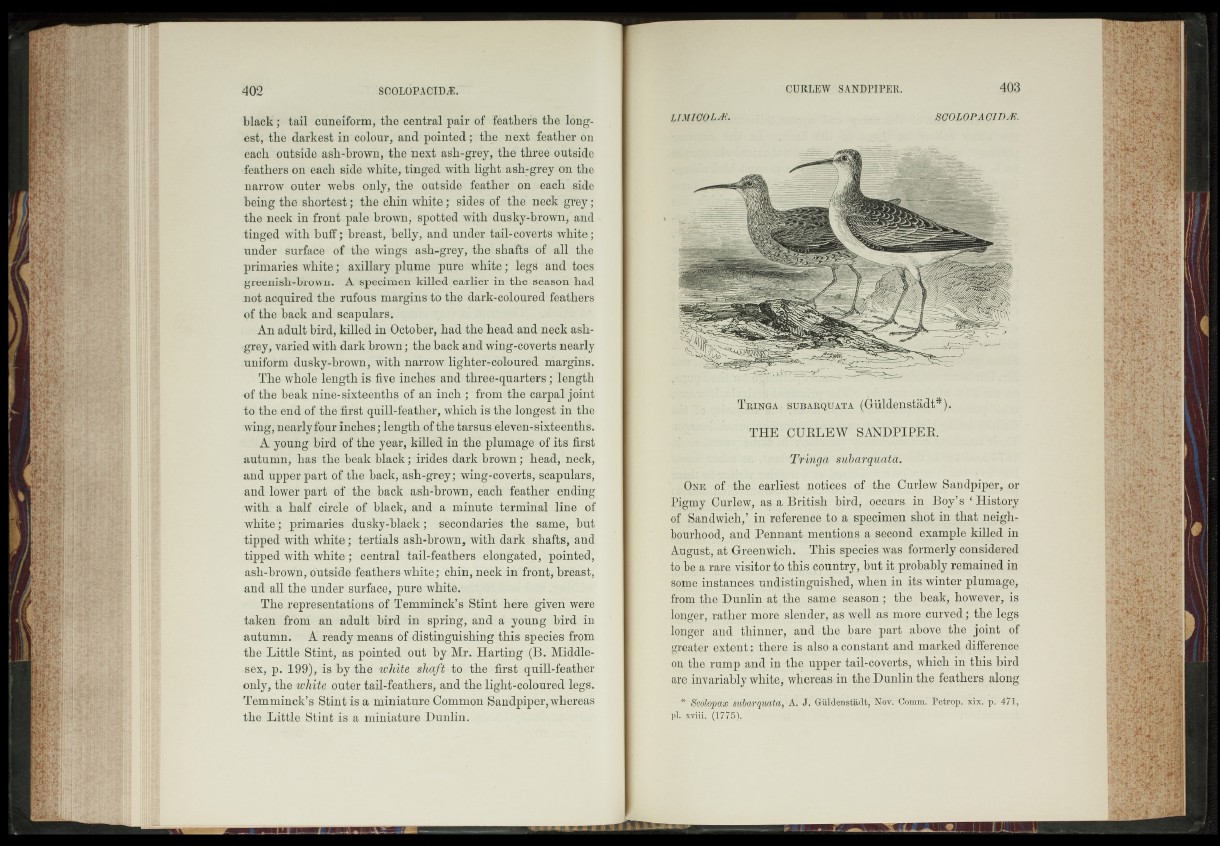
black; tail cuneiform, the central pair of feather's the longest,
the darkest in colour, and pointed; the next feather 6n
each outside ash-brown, the next ash-grey, the three outside
■feathers on each side white, tinged rath light. ashrgTey an the
narrow outer webs only, the outside feather on each .side
being the shortest; the chin white; sides .of the neck grey;
the neck in front pale brown, spotted with dusky-brown, and
.tinged with buff ; breast, belly, and under taihcoverts white ;
under surface of the wings ash-grey, the shafts of all the
primaries white; axillary plume pure white; legs and toes
greenish-brown. A specimen killed earlier in the season had
not acquired the rufous margins to the dark-coloured feathers
of the back and scapulars-.
. An adult bird, killed in October, had the head and neck ash-
•grey, varied with dark brown; the back and wing-coyerts nearly
uniform dusky-brown, with narrow lighterrcoloured margins.
The whole length is five inches' and three-quarters; length
of the beak nine-sixteenths of an inch| from the carpal Joint
to the end of the first quill-feather, which is the longest in the
wing, nearly four inches; length of the tarsus eleven-sixteenths.
A young bird of the year, killed in the. plumage of its first
autumn, has the beak black; hides dark brown; head, neck,
and upper part of the back, ashrgrey; wing-coverts, scapulars,
and lower part of the back ash-brown, each feather ending
with a half circle of black, and a minute terminal line of
white'; primaries dusky-black; secondaries tb&wsame, bi$b
tipped with white; tertials ash-brown, with dark shafts, and
tipped with white ; central tail-feathers elongated, pointed,
ash-brown, outside feathers white; chin, neck in front, breast,
and all the under ’surface, pure white.1/
The, representations of Temminck’s Stint here given were
taken from an adult bird ’in spring; and a young bird in
autumn. A ready means of distinguishing this species from
the Little Stint, as pointed out by Mr. Hartingt(B.' Middlesex,
p. 199),, is by the white.j shaft to' the first quill-feather
.only, the white outer tail-feathers, and the light-coloured legs.
Temminck’s Stint is a miniature .Common Sandpiperj whereas
the Little Stint is a miniature Dunlin.
TniKgA sjjbarquata (Guldenst&dt*)^ ^
THE ISuRLEW
I ‘Tringa 's’ubarqu'ata:. Sr
' ,pjj|,'.of!ihe earliest notices ^ ^he^Curlew Sandpiper, or
Pigmy fflirlnw as a British j3ir4JiJoc,curs,.|p .JB-py’-S ‘History
of Sandwich,’ in reference to a specimen shot in -that neigh--
b.ourhood, and Pennant mentions a second example killed in
August,.at Greenwich. This species was formerly considered
to be a rare visitor fo this country^ jtrat it probably remained in
some instances undistinguished, when in its winter plumage,
from the Dunlin at . the same ; the beak, however, i$
longer, .rather mpre slender, as well as more euryed; the legs
longer and thinnerand the bare part joint ,
great^^xtjent; tbei’e is also a,constant and marked difference
on the rump an'dij^ the. upper taihcpy,ej|ts? which in this bird
are jnvariabjywhite, whereas: in thp. Jhunlin the feathers along
* f r$ c 3 l'o p a o c k '$ tifia r(iu a ta *\M 31 x i^ p f AT’l ,
pi.